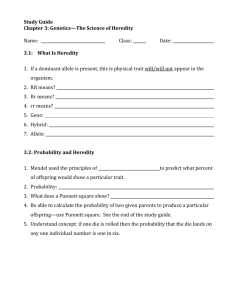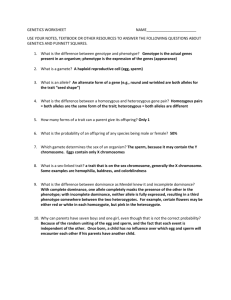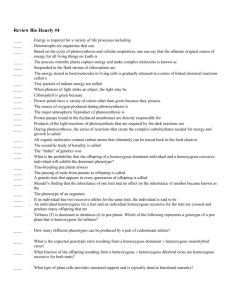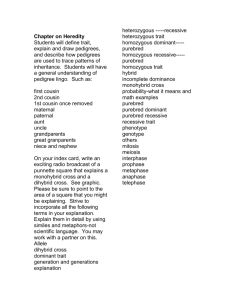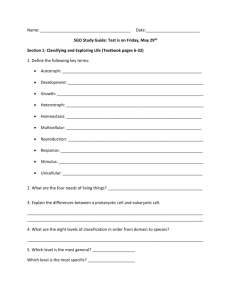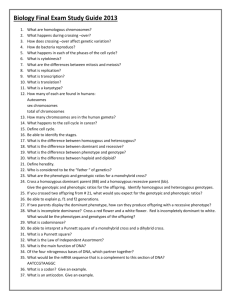Heredity Patterns Worksheet: Genetics Practice
advertisement
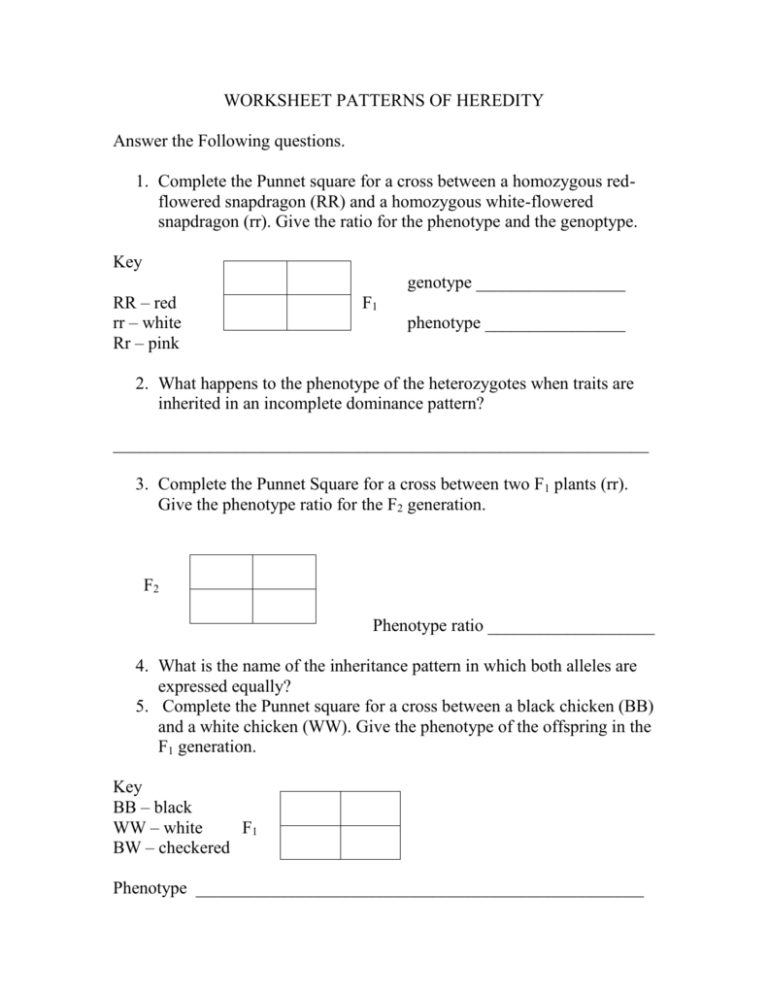
WORKSHEET PATTERNS OF HEREDITY Answer the Following questions. 1. Complete the Punnet square for a cross between a homozygous redflowered snapdragon (RR) and a homozygous white-flowered snapdragon (rr). Give the ratio for the phenotype and the genoptype. Key genotype _________________ RR – red rr – white Rr – pink F1 phenotype ________________ 2. What happens to the phenotype of the heterozygotes when traits are inherited in an incomplete dominance pattern? _____________________________________________________________ 3. Complete the Punnet Square for a cross between two F1 plants (rr). Give the phenotype ratio for the F2 generation. F2 Phenotype ratio ___________________ 4. What is the name of the inheritance pattern in which both alleles are expressed equally? 5. Complete the Punnet square for a cross between a black chicken (BB) and a white chicken (WW). Give the phenotype of the offspring in the F1 generation. Key BB – black WW – white F1 BW – checkered Phenotype ___________________________________________________ For each statement below, write true if the sentence is correct. If the sentence is incorrect, rewrite the sentence to make it right. 6. Traits controlled by more than two genes are said to have multiple alleles. 7. Multiple alleles can be studied only in individuals. 8. In humans there are 23 pairs of matching chromosomes called sex chromosomes. 9. Males have two X chromosomes, and females have an X and a Y chromosome. 10.Autosome chromosomes control sex-linked traits. Answer the following questions. 1. What are the characteristics of an individual that affect gene function? 2. What are the differences in the internal environment of males and females? 3. Mention some environmental factors that can affect gene expression. 4. Give examples of how an environmental factor can affect the expression of the phenotype. Complete each statement. 5. Organisms that are homozygous dominant and those that are __________ for a trait controlled by simple dominance have the same phenotype. 6. ______________ is used to determine whether an organism is heterozygous or homozygous for a trait. 7. Usually the organism being tested is ___________________ for the trait in question. 8. The heterozygous individual has two _____________ genes for the trait in question. 9. Carriers of the trait maintain _________ traits in a population. Complete the Punnet square to answer the following problems. 10.A breeder performs a testcross to determine whether an Alaskan malamute is homozygous dominant (DD) or heterozygous (Dd) for a recessive dwarf allele. Half the offspring appear dwarf. What is the genotype of the dog? _________________________________ 11.What results would be expected if the unknown dog was homozygous dominant (DD)? _____________________________________________________________ A Answer the questions using the pedigree shown for sickle cell anemia, a recessive blood type disorder. Male Female I Parents 1 2 II Has trait Carries 1 gene for trait 2 3 4 5 III 1 Offspring I, II Generations 1,2,3 Individuals 2 3 4 5 6 7 8 9 10 7 8 9 10 IV 1 2 3 4 5 6 12.How many generations are represented in the pedigree? 13.In generation I, which parent is heterozygous for the recessive allele? 14.In generation II, which individual marries an individual who is homozygous dominant? 15.In which generation does the first case of sickle cell anemia appear? 16.Which generation contains the most male carriers? 17.Can two carriers produce an individual with sickle-cell anemia? 18.Can a normal individual produce offspring with sickle-cell anemia? 19.Which parents produce two children with sickle-cell anemia?
